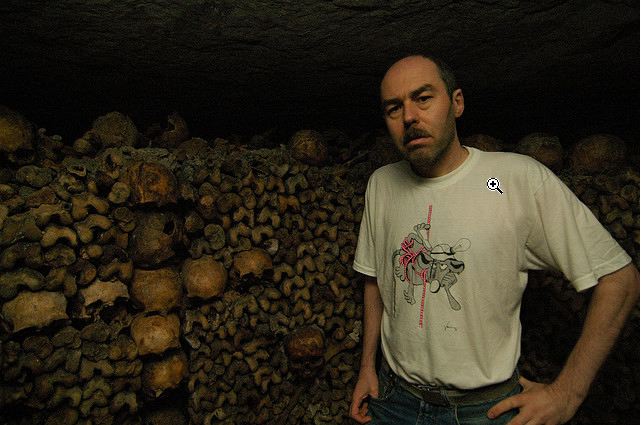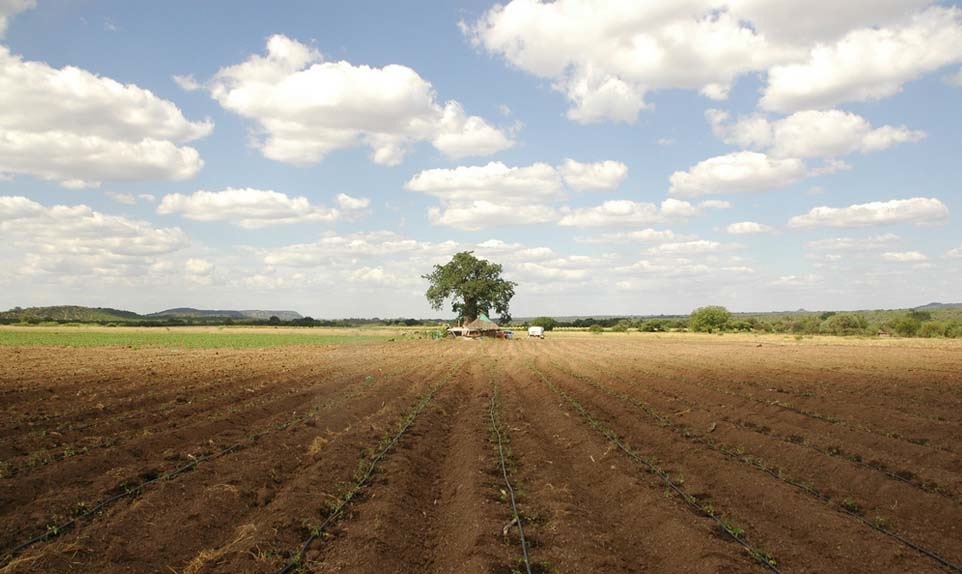
On August 5th, 2003, Los Angeles trial lawyer Alvin Michaelson and his wife arrived in Paris for vacation. Before long they were having dinner at a swanky bistro. Michaelson says it was "clearly hot, very humid" when he arrived and, as he noted, air conditioning is not common in Paris. His restaurant certainly had none. Michaelson didn't realize it but he had landed near the start of what scientists now say was the worst European heat wave in at least 500 years. The temperature had climbed to 99 degrees and had failed to cool off at night.
Michaelson himself initially felt fine. But "little by little ... it was getting the best of me." He started have trouble thinking and speaking clearly; then he passed out. Michaelson's companions caught him and stretched him out on the floor. Soon he came to, groggy but unharmed. He was served water lying down. Thinking back, Michaelson says one thing surprised him: the restaurant kept serving dinner around him as if nothing had happened. "I got the impression that they could have cared less if I had dropped dead inside the place." Michaelson didn't know, and couldn't know then, how lucky he was. By the time he fainted about 500 people had dropped dead from the heat across France. Of course nobody knew that yet, as these deaths were mixed in among all those who passed away across France for every other reason.
What everyone did know was that Western Europe was broiling. Great Britain reported its hottest day ever recorded. Train tracks there were buckling and power lines stretching. Forest fires were raging in several countries. Wire service reports blamed several dozen deaths in Spain and Portugal on the heat. In Paris, people were desperate to find a place to get cool. Among other places, they started flocking to was the Catacombs, a huge, dimly-lit network of rough-hewn caverns and tunnels left behind when limestone and gypsum were quarried hundreds of years ago to build the city. The underground passageways, right below the city's streets, are less than 60 degrees Fahrenheit year-round. Visitors to the Catacombs share the caves with the bones of 6 million people brought there during the late 18th century. The remains were moved to the caverns and neatly stacked in piles to empty the city's overflowing cemeteries. During the heat wave, the line to get into the comfortable caves stretched around the block; when the Catacombs closed each day, many sweltering people had to leave without getting any respite.
Meanwhile, newspaper reporter Marc Payet of the paper Le Parisien, who had heard reports of heat-related deaths in other countries, wondered if the heat wave had turned deadly in France as well. He called Patrick Pelloux, an emergency room doctor he knew. "He said to me, 'Marc, it's incredible,'" recalls Payet. "'I know that two or three people are dead because of the hot weather and something happening. I don't know what happened but we have many people in the hospital and I'm sure it's due to the climate.'" Pelloux, who is the head of the national union of emergency room physicians, himself recalls that his staff at Saint Antoine Hospital was overwhelmed. Like most Paris hospitals, Saint Antoine had no air conditioning, and was running low on ice, a critical supply for treating heat victims, especially the elderly. So staff had turned to the city's leading supplier of ice for keeping fish fresh.
After talking to Pelloux, newpaper reporter Payet made other inquiries; government health officials assured him nothing was amiss. So he held off before sounding the alarm. The next day, though, he called Pelloux again. The emergency room doctor was even more concerned this time. "It's sure," Pelloux told him. "I talked with police officers and with firemen and they said it seems to be true that something is happening in Paris and…people are dying because of a heatwave."
Payet's story about the heat wave ran the next day in Le Parisien, one of the country's leading newspapers; it alerted the country for the first time to the incident's deadly toll. But the tragedy had not even peaked yet. Three days afterwards, the temperature pushed up to 102 degrees. Recalling these tough days at his hospital, Pelloux says, "Paris was invaded by death."
Researchers subsequently discovered that the high August heat caused or contributed to more than 40,000 deaths across Europe, including eleven or twelve hundred deaths in Paris. But the chance of dying from the heat in Paris was three times higher than the average across France. Alfred Spira, an epidemiologist and director of the French Institute for Public Health Research, has puzzled over this statistic. He thinks there are two primary reasons: first, buildings in the normally-cool capital city are not designed for hot weather. As Spira puts it, "if you look around you in Paris usually there are no shutters in the windows in Paris," whereas in southern French cities, like Marseille—which had no excess deaths—buildings have shutters. People with shutters keep their homes cooler by swinging the enclosures shut in the heat of the day. The second reason is demographic. Paris has an older population than most major cities of developed countries, mostly women. There are many elderly women living alone in tiny, stuffy apartments, former maids' rooms—on the top floor of multistory brownstones—known as "chambres de bonne." These dwellings turn into solar ovens on hot days. As an anguished French public learned after August 2003, the country's mothers and grandmothers essentially baked to death while everyone else was on vacation. Spira says that these physical and demographic characteristics of Paris, combined with the social isolation of many elderly people, made the heat wave unusually deadly.
The French government has since drafted a plan to respond to future heat waves. Liliane Capelle, the Deputy Mayor of Paris for Seniors and Intergenerational Relations and one of the officials overseeing the plan, says the city is now better prepared. For instance, on the hottest days, the government broadcasts radio announcements reminding people about drinking water and keeping their skin cool. If needed, the government plans to requisition large air-conditioned spaces like theaters and hotels for shelter. Paris has compiled a registry of people at risk who may be monitored by phone or, if necessary, in person. Officials are not encouraging people to install air-conditioning, out of concern about using more electricity, which would make global warming even worse.
Many experts praise the government's efforts. But some, such as gerontologist Jean-Louis San Marco, former chairman of the French Institute for Prevention and Health Education, also question if Paris is yet ready for the increased heat expected in the future. "We now know how to manage…an ordinary heat wave," he says. "But the brutality of the thermal changes we're going to face, that's extremely dangerous and we don't know how to cope."
At the Royal Netherlands Meteorological Institute, in De Bilt, Netherlands, climate scientist Andreas Sterl is studying just how brutal things might get. He says that in southern Europe, for each degree centigrade increase in average temperature, extreme temperatures—the sort that occur once a century—will go up by two or three degrees. So if, as expected, average temperatures go up about 6 degrees Fahrenheit, extremes will go up 12 to 18 degrees. For example, he says in Southern France, where extreme temperatures now reach about 104, future temperatures could surpass 120 degrees.
Climate researchers say many kinds of weather extremes, not just heat, will become worse in the future. That's because adding warmth to the planet enhances the processes already taking place. As Stanford University climatologist Stephen Schneider puts it, "nature makes heat waves, nature makes hurricanes, nature makes floods," but, by adding greenhouse gasses to the air, "we are enhancing the drought and flood extremes."



